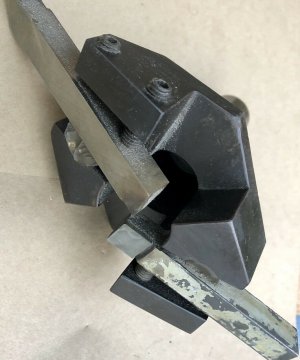Perhaps I misunderstand your challenge. If I had a rod, which was 48 inches long, and wanted to make a bunch of spacers/buttons a half inch thick, I would pull the tailstock, put in a ball-bearing steady rest on the ways, and a spider on the back side of the spindle.
Then I would cut the O.D. to the correct dimension with the rod sticking out a couple inches from the chuck (and face it).
Then I would slide the rod (which has the correct O.D. into the bearing steady rest and then start cutting the desired O.D. on
large sections between the chuck (or collet) and the steady rest. After each O.D. run, the bar would get slid to the right until the entire
48 inch rod (except the last quarter inch gripped by the chuck/collet) is cut to the desired O.D.
Then Rod would then get slid back to the far left, and the parting tool would get set up, and cutting the rod (which has the correct O.D.), into buttons would begin.
As an extra step, if you don't like the finish of the parting tool, each of the "buttons" could be sliced a bit thick, and the buttons could be chucked up and faced. If you have soft-jaws for your chuck, this is where they really shine. A collet would also work well, provided too much of the rod is not sticking out for the facing operation.
But then, this is where a quick drawing on a napkin of the desired part would help us do a better job of describing an efficient process to make it. I may be entirely off the mark of what you intend. Include how many parts you need to make, that is part of the calculation of "how fancy" the setup is. If a LOT of parts are being made, then you can burn the time to do a really fancy setup. If only ten parts are being made, I tend to keep it basic.



